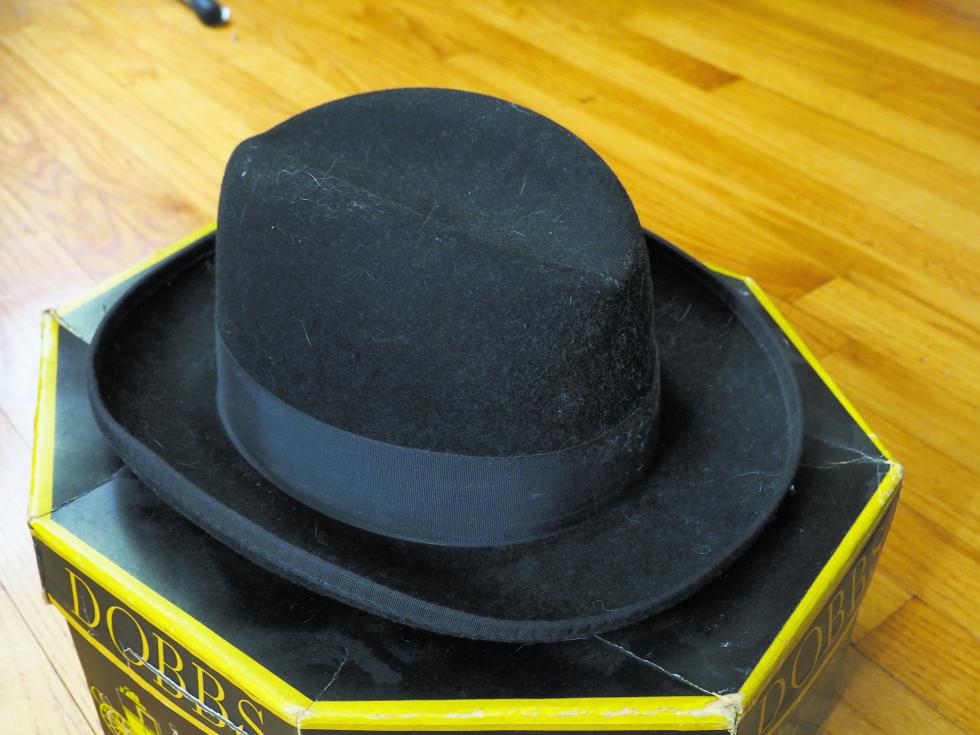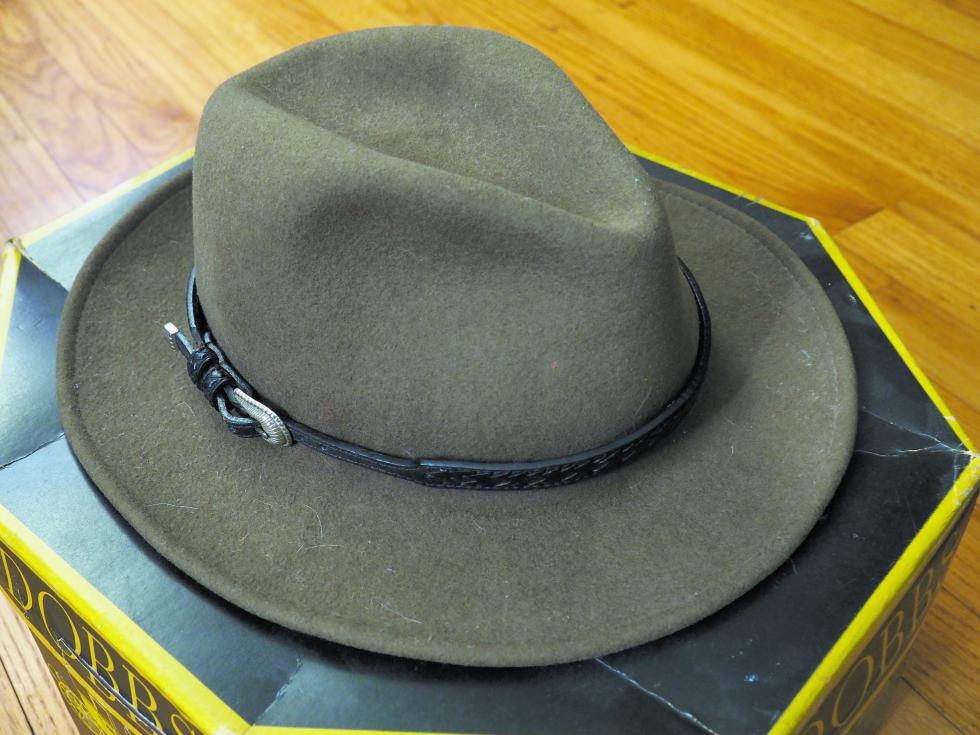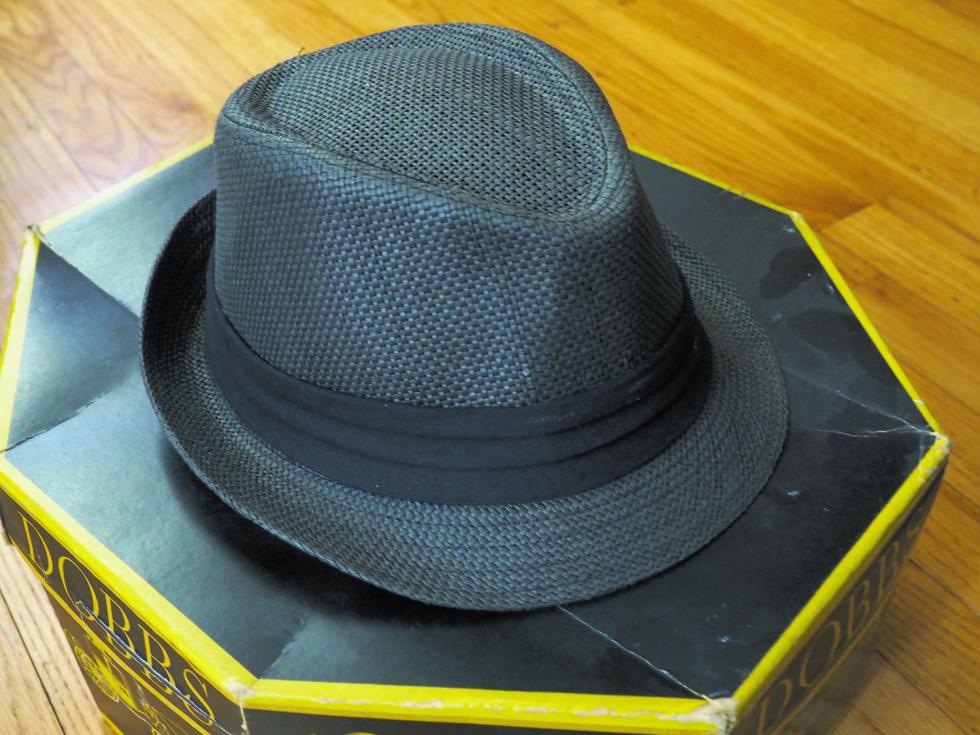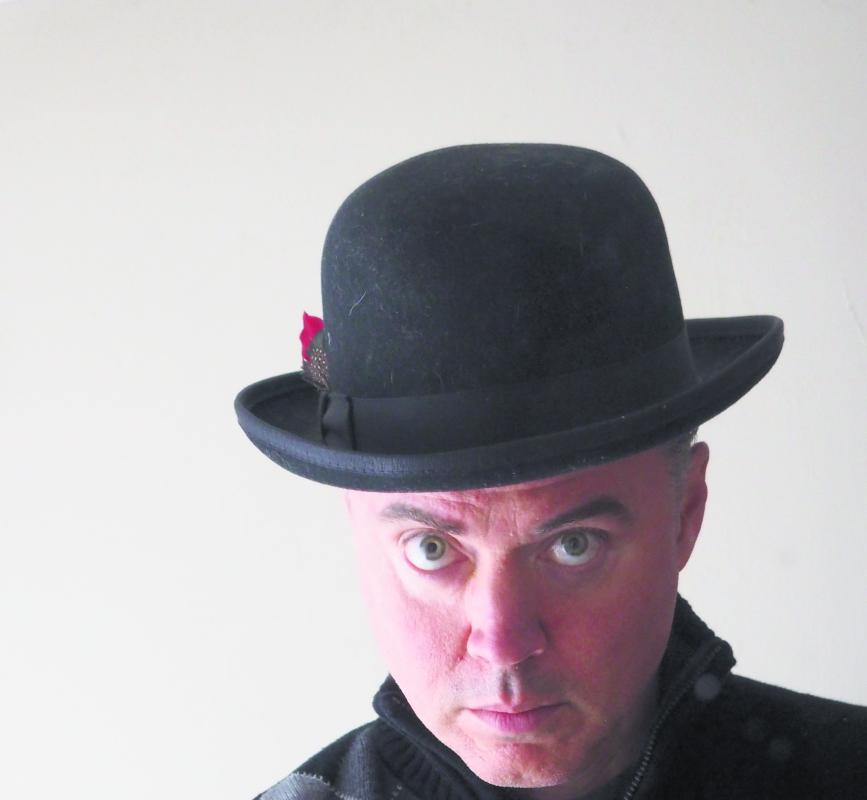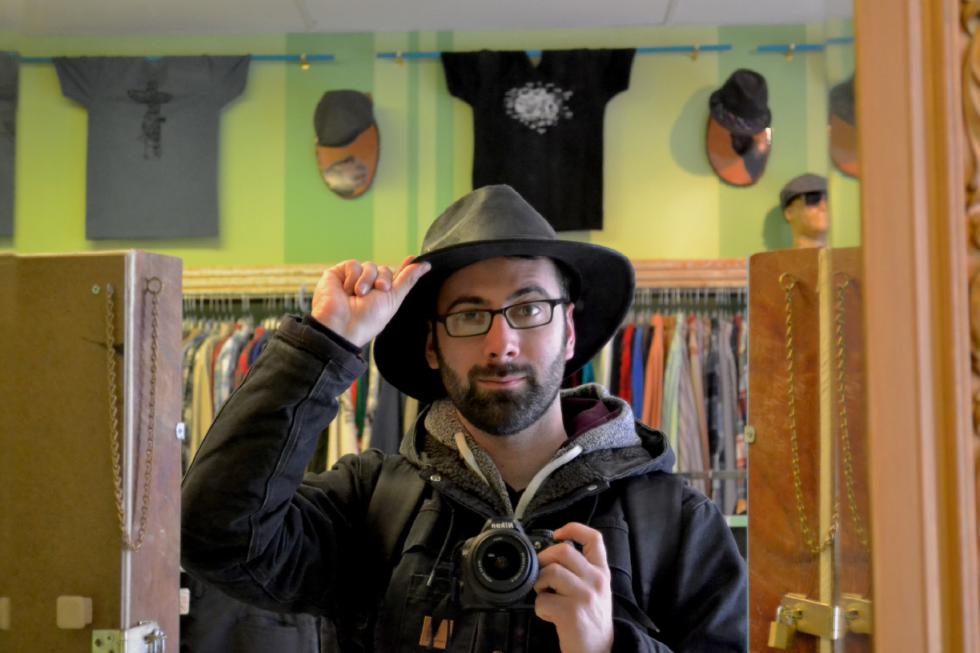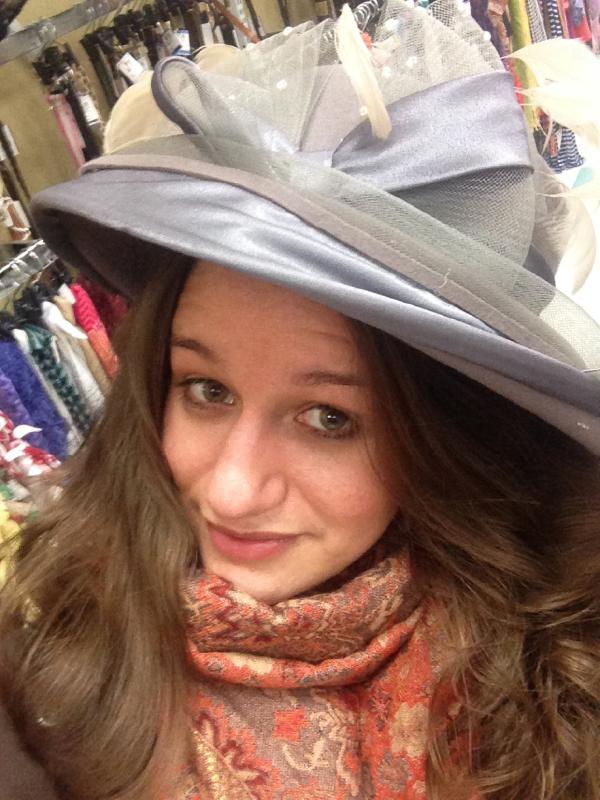Some people blame John F. Kennedy’s wind-blown locks. Others blame the narrow space between the tops of post-World War II cars and their occupants’ heads. Whatever the reason, it’s clear that the old-school men’s hat has gone the way of sock suspenders and spats, a decline that indeed became most noticeable in the early ’60s. Before then, a gentleman would no more sally forth hatless than he would pants-less.
Certain vestiges remain, of course. It’s common to see a pageboy cap, and the uber-American habit of down-dressing via baseball caps has become ubiquitous. But a cap is not really a hat. We leave hats to eccentrics and the hair-challenged.
It’s an inescapable truth, too, that hats have come to symbolize certain eras or characters. Dare to don a brown fedora, and somebody is going to mention your “Indiana Jones hat.” Plop a Homburg up there, and they’ll start talking Godfather. American culture has mostly reduced the wide-brimmed hat to shorthand for film noir gangsters and journalists. More recently, the flat-topped porkpie has been forever enshrined as the preferred lid of Breaking Bad’s Heisenberg.
It’s a shame. A shame because in the slow-changing world of men’s formal fashion, we’ve mostly walled off a whole world of style that has its own complex meanings and rules, leaving it to languish on the heads of Johnny Depp and the Royal Canadian Mounted Police.
Though it’s still true that wearing your Homburg on Main Street will place you at a certain inevitable remove from your fellow pedestrians, there may yet be hope for the venerable gentleman’s lid. If you dare to enter those waters — and really, it’s just a hat, so why not? — you’ll probably need a few pointers regarding the history and function of the man’s hat and its many styles.
There are certain extremes that we’ll probably never see again — the tricorn, for instance, seems to have attached itself permanently to American colonials of the 18th century, and that weird military taco always seen atop Napoleon is never going to fit in your automobile. But just inside the boundaries of the acceptable, you’ll still find a few 20th- and even 19th-century classics.
The starter hat for the aspiring contemporary student of haberdashery has long been the fedora, that wide-brimmed felt topper that’s common wear in every film noir movie ever made. They can, even now, be found in many colors, and like it or not will place you firmly in the camp of Sam Spade and James Cagney, and maybe even induce suspicion in passers-by.
Beyond the fedora, things get more interesting, and knowing one’s hats involves some acquaintance with English customs. Take the Homburg, for instance. Long before its place atop Marlon Brando and Al Pacino in the Godfather films, the Homburg made its way from a spa town in Germany to Europe-wide adoption. Bernhard Roetzel, author of Gentleman: A Timeless Fashion, and many other sources agree that King Edward VII, near the end of the Victorian era (when he was but a prince), brought back the Homburg’s curving lines and rolled brim from a trip to Bad Homburg, Germany. From there it became a standard formal hat, second only to the venerable top hat. It’s not, at least, traditionally, something to wear with your jeans.
The top hat itself, the crowning glory of a gentleman’s most elegant eveningwear, dates back to 1797, says Roetzel. It was then that its inventor, John Hetherington, first marched into the street with his new creation. Legend has it that Hetherington’s hat was so shocking that he had to pay a fine for disturbing the peace. Of course, a hundred years later, top hats were extremely popular. Another hundred years on, well, we’re not going to mention Slash, okay?
It’s worth noting, too, that JFK, so often blamed for the demise of men’s hats, did not go to his inauguration bare-headed. It’s an oft-cited “fact” that he let his coiffure fly free that day, starting a new trend. The photographic evidence, however, reveals that JFK arrived underneath a nearly Lincoln-sized top hat, though he removed it, as fashion would dictate, for his speech. (Even Neil Steinberg’s Hatless Jack says the bare-headed trend has much earlier roots, and was merely accelerated by a president who didn’t love hats.)
Even now, a dapper dresser wearing his finest can sometimes be spotted beneath a top hat or Homburg. That said, though there’s one place where the bowler can still be spotted on rare occasion — central London — the next rung down the ladder of chapeau formality is perhaps the most demanding of its wearer. Roetzel, who admits that many find bowlers “ridiculous,” opines thusly: “Should you feel the need to acquire this most English of all English articles of clothing, then do so — you will be buying a true myth.”
Invented in the mid-19th century to provide English gamekeepers with sturdier headgear, the bowler was also by most accounts the most popular hat in the Old West. Still, thanks in part to Charlie Chaplin and Laurel and Hardy, Roetzel’s “ridiculous” point holds. No matter how good you might look in the thing, unless you’re a clown or poker dealer, you’ll probably be relegated to the “eccentric” file, just beside all the guys in Magritte paintings. All the more reason, perhaps, to wear one. Preferably, saith tradition, with a pin-striped suit.
A welcome counter-trend to the vanishing of hats has shown up in recent years, mostly via Brooklyn hipsters and young jazz musicians. The stingier-brimmed cousin of the fedora, the trilby, has made a modest comeback. It, too, is a quintessentially English hat, the sporting choice of the upper crust on horse-racing days. Perhaps that modest brim, with its shorter reach into others’ personal space, is simply less of a commitment. Whatever the case, it seems to be the only major contemporary salient of hat culture. Some things have become too tainted with a naive antiquity to ever come back — the straw boater comes to mind — but those of us who aren’t afraid to court the fringes of eccentricity owe something to our hatted forebears. Why not try venturing forth topped with an item of storied pedigree? Who knows? You might end up liking the results. Or getting cast in Guys and Dolls.•
James Heflin be contacted at jhefflin@valleyadvocate.com.

